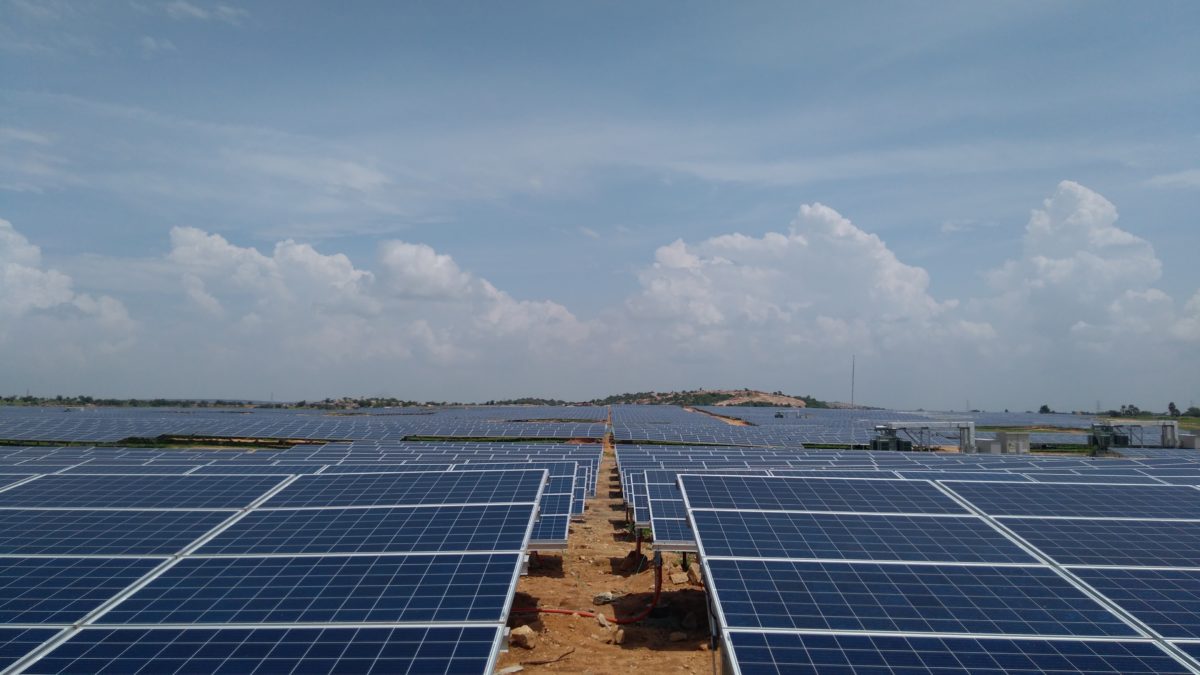It is solar power that has propelled Karnataka to dethrone Tamil Nadu as India's leading state for renewables and PV will continue to be the engine that meets rising energy demand in the decade ahead, according to a new report.
The U.S.-based Institute for Energy, Economics and Financial Analysis (IEEFA) today released its Karnataka's Electricity Sector Transformation report, outlining how the state outstripped Tamil Nadu's renewable energy generation capacity in 2017-18.
According to the report, Karnataka added 4 GW of solar capacity last year – although the figure 3.9 GW is quoted elsewhere in the findings – to take the state's total installed renewables capacity to 12.3 GW, some 2.5 GW more than its coal capacity and 1.7 GW more than the figure for long time renewables leader Tamil Nadu.
And with recent solar auctions in Karnataka resulting in a solar power price of R2.82-3.06/kWh ($0.041-0.044/kWh) – below the national average of R3-5/kWh – and construction advanced at the 2 GW Pavagada industrial solar park, IEEFA says solar will continue to lead the state's energy transition.
The report's authors predict PV capacity – which at 5 GW now oustrips the 4.7 GW of wind power in the state – will meet 16 TWh of anticipated increased energy demand over the next decade, compared to 13 TWh from wind and the same figure from coal. The IEEFA report states generation will come from 4.5 GW of new utility-scale solar and 1.4 GW of rooftop installations up to 2027-28, with solar meeting around 33% of increased demand.
And the report's authors add: “This looks decidedly unambitious relative to the 3.9 GW of solar additions in 2017-18 alone… more low-cost, utility-scale solar can and should be added, but only as sufficient interstate power grid transmission capacity is added… to avoid curtailment and boost net exports to states with lower solar radiation potential.”
Decoupling GDP from energy demand
The analysts highlight the role solar is playing in the critical drive to decouple economic expansion and energy demand in India, mirroring efforts being made around the world, and mention the federal, $21.5 billion scheme to distribute 2.75 million solar irrigation pumps, a million of them grid connected.
The report's authors call for offtake and payment assurances to drive rooftop installations and expect the 1.4 GW of new rooftop systems to come in the commercial and industrial segment.
Popular content
Karnataka – and India's – turbocharged adoption of solar will be driven by the Chinese authorities' decision to rein in PV, and the anticipated global panel price pressures that policy decision will cause; as well as by Prime Minister Narendra Modi's updated solar target of installing 227 GW of solar by 2022.
However the report's authors, Tim Buckley and Kashish Shah, note potential anti-dumping tariffs on the imported Chinese panels that make up an estimated 85-90% of the products used in India, could be a fly in the ointment.
AD tariffs
“The Supreme Court of India, having ruled against a petition to impose an anti-dumping duty on imported solar modules, potentially looks to have eliminated a significant threat to India's least-cost solar capacity building,” states the report “The final decision still pending with [the] Directorate General of Trade Remedies (DGTR) on the matter, hopefully should be resolved with zero import duties on solar module imports.”
The IEEFA analysts also highlight the desire to impose retro wheeling charges on solar generators, and a lack of funding for transmission network upgrades as obstacles to overcome in Karnataka.
The state's high court has issued an interim stay on the attempt in May by the Karnataka Electricity Regulatory Commission to remove the wheeling charge waiver – imposed upon generators for transmitting power across grid boundaries – and to impose backdated charges.
And the report cites fears the move by India's federal Central Electricity Regulatory Commission to waive interstate transmission charges in March, rather than helping establish the desired national ‘green corridors' for clean energy, will actually hamper the effort by leaving insufficient funds to finance much-needed network expansion.
This content is protected by copyright and may not be reused. If you want to cooperate with us and would like to reuse some of our content, please contact: editors@pv-magazine.com.



By submitting this form you agree to pv magazine using your data for the purposes of publishing your comment.
Your personal data will only be disclosed or otherwise transmitted to third parties for the purposes of spam filtering or if this is necessary for technical maintenance of the website. Any other transfer to third parties will not take place unless this is justified on the basis of applicable data protection regulations or if pv magazine is legally obliged to do so.
You may revoke this consent at any time with effect for the future, in which case your personal data will be deleted immediately. Otherwise, your data will be deleted if pv magazine has processed your request or the purpose of data storage is fulfilled.
Further information on data privacy can be found in our Data Protection Policy.